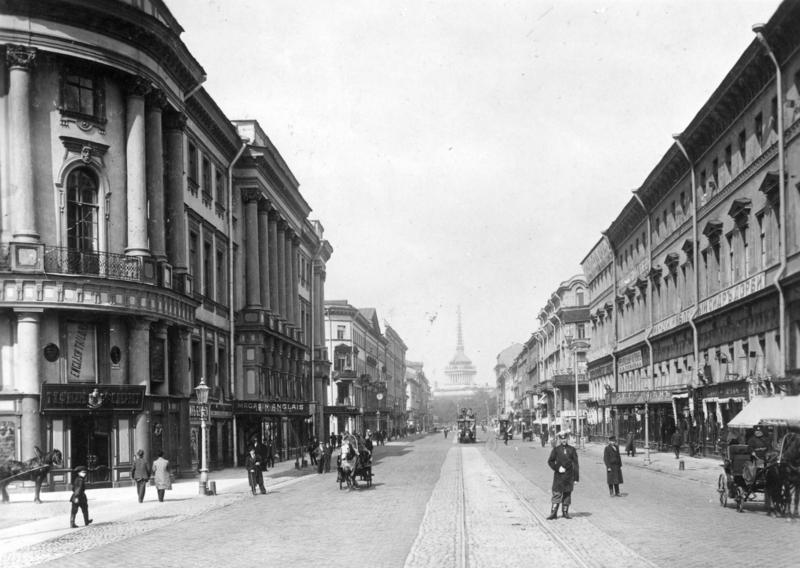Nevsky Avenue (Prospect) is the main street in the city of St. Petersburg, Russia. Planned by Peter the Great as beginning of the road to Novgorod and Moscow, the avenue runs from the Admiralty to the Moscow Railway Station and, after making a turn at Vosstaniya Square, to the Alexander Nevsky Lavra.
The chief sights include the Stroganov Palace, the huge neoclassical Kazan Cathedral,


The Nevsky Prospeсt f (1900).


The chief sights include the Stroganov Palace, the huge neoclassical Kazan Cathedral,
the Art Nouveau Bookhouse (Dom Knigi), Elisseeff Emporium, half a dozen of 18th-century churches, a monument to Catherine the Great, the Anichkov Bridge with its horse statues and much more. The feverish life of the avenue was described by Nikolai Gogol in his story "Nevsky Prospekt". Fyodor Dostoevsky often employed the Nevksy Prospekt as a setting within his works, such as "Crime and Punishment" and "The Double: A Petersburg Poem".
The view of the Nevsky Prospeсt from the Admiralty (1753).

This is the plan of St. Petersburg by I. Homann. ( 1720).

View of Palace Square from Nevsky Prospeсt (1804).

Nevsky Prospect. Early 19th century.


View of Palace Square from Nevsky Prospeсt (1804).

Nevsky Prospect. Early 19th century.

The Nevsky Prospect (1900).
Monument to Alexander III on Znamenskaya Square. (1910).
The Nevsky Prospeсt (1912).
The Nevsky Prospeсt f (1900).

The Nevsky Prospeсt near the Nicholas Railway Station (1890).

The Nevsky Prospect in 1901.
Some information of this post is taken from the diary of Adrian Fedorovich Timofeev(1882-1954) - mathematician, socialist, revolutionary, financier and banker.
Some information of this post is taken from the diary of Adrian Fedorovich Timofeev(1882-1954) - mathematician, socialist, revolutionary, financier and banker.
The full text of diary (in Russian) is on





Комментариев нет:
Отправить комментарий